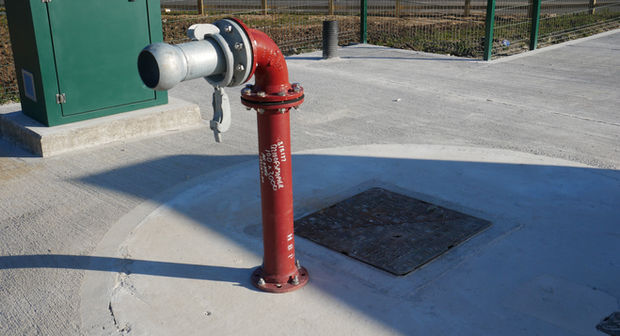Adoptable Pumping Stations
Adoption of a pump station can be an intimidating task. Paradigm are always on hand to help!
The adoptable pumping station will need to be designed and installed in line with the local water companies’ addendum of Section 104 of the Water Industry Act 1991 specification. This compliance allows the local water company to take responsibility for future maintenance and running costs.
Paradigm offers a full design, installation, commission, and support adoption with the local water company.
How Can We help?
Paradigm works closely with housebuilders, water authorities and local authorities to offering a full pumping station design and delivery along with surge analysis and compound structural design.
-
Anglian Water
-
Dŵr Cymru
-
Severn Trent Water
-
Severn Trent Services
-
South West Water
-
Southern Water
-
Thames Water
-
United Utilities Water
-
Wessex Water
-
Yorkshire Water
-
Veolia
-
Independent Water Networks
-
South East Water
Design Elements Of Adoptable Pumping Stations
Before a water company will commit to taking on a pump station, a comprehensive design package has to be completed. It is important this is displayed clearly and shows how it complies with the regulations in a few key areas. Some of these are shown below.

1. Emergency Storage
Like all mechanical equipment, pump stations are prone to failure from time to time. Should a failure occur, the issue may take some time to fix. This time is the expected response time and for most water authorities it is around 4 hours (Note: it is strictly not advised to use this figure for private systems). The storage can be stored within the pump stations, some allow use of the upstream adoptable network and within other systems such as oversized pipes, specialist HDPE storage tanks among other options.
Our design package includes a document clearly showing the emergency storage requirement and how we meet this requirement.


2. Septicity Calculations
Septicity is caused from the breakdown of bacteria occurring due to the low turn around time, or retention time, of sewage leading to the creation of dangerous and smelly gases and liquids leading to corrosion of pipework and concrete surrounds. To avoid this, calculations are compiled to prove that sewage will not be held in either the wet well or rising main for longer than 6 hours. If this cannot be achieved, we will provide details of septicity control equipment. We also advise if, when 50% occupation of the site has been reached, the water company will be happy to take the system on without risking septicity issues.
Our design package will include a time figure for full and half occupancy which must be less than 6 hours. If not, we will show details of the septicity control equipment required on the site.


3. Pump Start Calculations
In order to avoid pumping equipment creating excessive heat leading to premature failure, each manufacturer advises how often pumps should start up in one hour. Some water authorities have their own stipulations based on past experience. In different circumstances such as during peak flow, during dry weather flow (DWF), during an emergency storage event or during normal cycles, this number can differ.
Our design calculations will show the maximum number of pump starts allowed and the actual pump starts.


4. Surge Analysis
Long rising mains can cause additional design issues with the potential to burst and cause severe disruption caused by cavitation or water hammer. Rising main over 500m require this to be completed and we will attach this to our submission package and show the changes to our design caused by this in the reevant section of the technical submission.
Our design submission will show the detail of the surge analysis report along with any changes to the design required within the relevant sections.


5. Rising Main Gradient
Although we cannot control this, we check that the rising main gradient is acceptable as it may change our pump station design. If some amendments can be done to the rising main in order to improve the design or make the system more cost effective we will.
Our design calculation will not show anything in this regard but we expect to see this on the rising main profile.


6. Wet Well Diameter
Within the guidance and addendums of water companies, minimum dimension stipulations are given such as minimum depth from inlet to wet well base level.
Our design calculations will incorporate these dimensions without showing them but these are available on demand.


7. Velocity Checks
To avoid sediment build up within rising mains and to avoid over sizing the system a minimum and maximum velocity is given. Typically this is between 0.75m/sec and 1.8m/sec although some vary such as Southern Water who expect this to be between 1.2m/sec and 2.0m/sec.
Our design calculation will show what these velocities are at the various stages of the system.
.png)
























